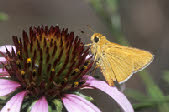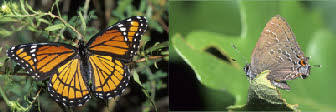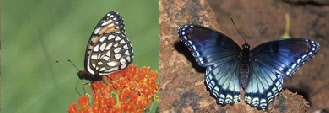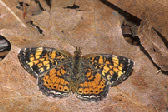The Butterflies of the World Foundation
A Non-





Celastrina ladon, Strawberry Lake Recreation Area, Turtle Mountain State Forest,
North Dakota, 15 May 2003 Ref
#: I-

Celastrina ladon, Strawberry Lake Recreation Area, Turtle Mountain State Forest,
North Dakota, 15 May 2003 Ref
#: I-
Spring Azure
Celastrina ladon, Cramer, 1780
Subfamily Polyommatinae
Taxonomy
The family Lycaenidae is a large and varied worldwide group that has 4,000 to 6,000
species depending on the ever-
All photographs, artwork, text and website design are the property of The Butterflies of the World Foundation (unless otherwise stated) and are protected under national and international copyright laws. Photographs, artwork or text on this website may not be reproduced in any way without prior written consent of The Butterflies of the World Foundation.

Celastrina ladon, female ovipositing on Roughleaf Dogwood, Cornus drummondii, Lexington Wildlife Management Area, Cleveland County, Oklahoma, 7 May 2006
Ref
#: I-
General Information:
Celastrina ladon belongs to the subfamily Polyommatinae. This butterfly’s range is from Alaska and Canada south of the tundra through most of the United States except the Texas coast, southern plains, and peninsular Florida then south in the mountains to Columbia. It is found in openings and edges of deciduous woods, old fields, wooded freshwater marshes and swamps.
Lifecycle:
The larval food sources includes flowers of a variety of woody shrubs and occasionally herbs including dogwood (Cornus florida), New Jersey tea (Ceanothus americana) and meadowsweet (Spiraea salicifolia). Males patrol and perch all day but are most active from midafternoon until dusk. Eggs are laid on flower buds. Caterpillars feed on flowers and fruits and are tended by ants. Chrysalids hibernate.

Roughleaf Dogwood, Cornus drummondii, a common larval food source, Lexington Wildlife
Management Area, Cleveland County, Oklahoma Ref #:
N-

Roughleaf Dogwood, Cornus drummondii, a common larval food source, Lexington Wildlife
Management Area, Cleveland County, Oklahoma Ref
#: F63-

Roughleaf Dogwood, Cornus drummondii, a common larval food source, Lexington Wildlife
Management Area, Cleveland County, Oklahoma Ref #:
F-

Roughleaf Dogwood, Cornus drummondii, a common larval food source, Lexington Wildlife
Management Area, Cleveland County, Oklahoma Ref
#: F-

Roughleaf Dogwood, Cornus drummondii, a common larval food source, Lexington Wildlife
Management Area, Cleveland County, Oklahoma Ref #: N-